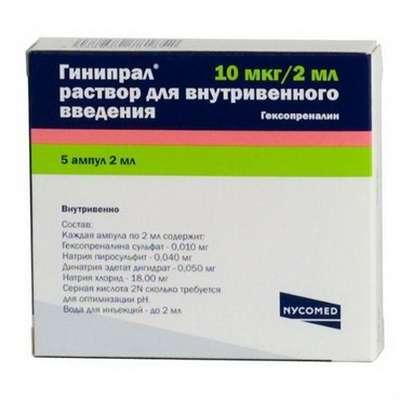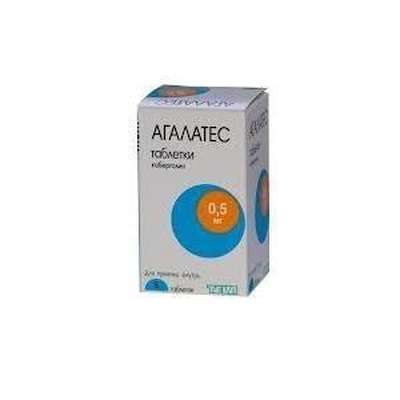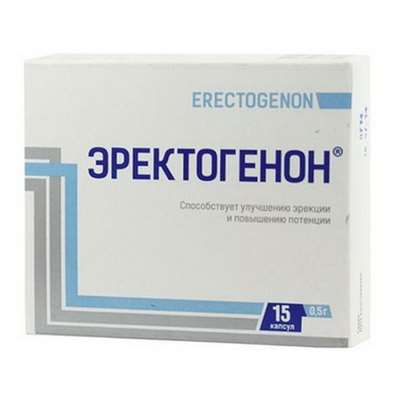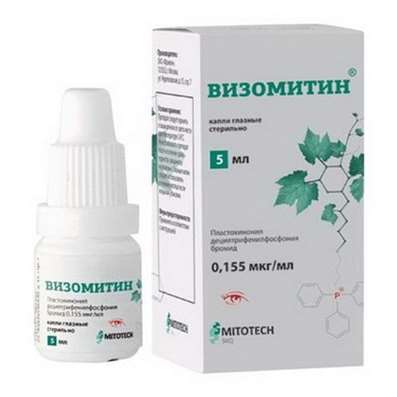Instruction for use: Etoricoxib (Etoricoxibum)
I want this, give me price
Pharmacological group
NSAIDs – Coxiba
Nosological classification (ICD-10)
M06.9 Other specified rheumatoid arthritis
Rheumatoid arthritis,Pain syndrome in rheumatic diseases, Pain in rheumatoid arthritis, Inflammation in rheumatoid arthritis, Degenerative forms of rheumatoid arthritis, Children's rheumatoid arthritis, Exacerbation of rheumatoid arthritis, Acute articular rheumatism, Rheumatic arthritis, Rheumatic polyarthritis, Rheumatoid arthritis, Rheumatic polyarthritis, Rheumatoid arthritis, Rheumatoid arthritis of active course, Rheumatoid arthritis, Rheumatoid polyarthritis, Acute rheumatoid arthritis, Acute rheumatism
M10.9 Gout, unspecified
Arthritis Gouty, Acute gouty arthritis, Acute attack of gout, Gouty Arthritis, Articular syndrome with exacerbation of gout, Articular syndrome with gout, Urarturia, Chronic arthritic arthritis, Acute gout, Salt diathesis
M13.9 Arthritis, unspecified
Arthritis,Purulent arthritis (non-infectious), acute Arthritis,Pain in acute inflammatory diseases of the musculoskeletal system,Pain in chronic inflammatory diseases of the musculoskeletal system,The pain in osteoarthritis, Inflammation in osteoarthritis, Inflammatory arthropathy, Inflammatory and degenerative joint diseases, Inflammatory disease of the musculoskeletal system, Inflammatory joint disease, Inflammatory diseases of the musculoskeletal system, destructive arthritis, The disease of the musculoskeletal system, Diseases of the musculoskeletal system, Diseases of the musculoskeletal system and connective tissue, Infections musculoskeletal system, monoartrit, Non-infectious arthritis, rheumatic arthritis, Osteoarthritis, Acute inflammation of the musculoskeletal tissue, Acute inflammatory diseases of the musculoskeletal system, Acute inflammatory condition of the musculoskeletal system, Acute arthritis, Acute osteoarthritis, Post-traumatic osteoarthritis, Reactive arthritis, Chronic inflammatory diseases of the joints, Chronic arthritis, Chronic inflammatory arthritis, Chronic inflammation of the inner layer of the joint capsule, Chronic inflammation of the joint capsule,Chronic inflammatory disease of the joints, Exudative arthritis
M19.9 Arthrosis, unspecified
Change in brush with osteoarthritis, Osteoarthritis, Osteoarthrosis, Arthrosis of large joints, Pain syndrome in osteoarthritis, Pain syndrome in acute inflammatory diseases of the musculoskeletal system, Pain syndrome in chronic inflammatory diseases of the musculoskeletal system, Deforming arthrosis, Deforming osteoarthritis, Deforming osteoarthritis of joints, Osteoarthritis in the acute stage, Osteoarthritis of large joints, Acute pain syndrome with osteoarthritis, Post-traumatic osteoarthritis, Rheumatic osteoarthritis, Spondylarthrosis, Chronic osteoarthritis
M45 Ankylosing spondylitis
Ankylosing spondylarthrosis, Marie-Strumpel disease, Ankylosing spondylitis, Pain syndrome in acute inflammatory diseases of the musculoskeletal system, Pain syndrome in chronic inflammatory diseases of the musculoskeletal system, Bechterew's disease, Ankylosing spondylitis, Diseases of the spinal column, Rheumatic spondylitis, Bechterew-Marie-Strumpel disease
Code CAS 202409-33-4
Characteristics of Etoricoxib
NSAIDs. Selective inhibitor of COX-2.
Pharmacology
Pharmacological action - anti-inflammatory, antipyretic, analgesic.
Selectively inhibits COX-2, inhibits the biosynthesis of PG; has anti-inflammatory, analgesic and antipyretic effect. Selective oppression of COX-2 is accompanied by a decrease in the severity of inflammatory symptoms, with no effect on the function of platelets and the mucosa of the gastrointestinal tract. Dose-dependent inhibition of COX-2 without affecting COX-1 (at doses up to 150 mg / day).
The anti-inflammatory effect is associated with a decrease in vascular permeability, an improvement in microcirculation, a decrease in the release of inflammatory mediators (PG, kinin, LT) from the cells and the suppression of energy supply of the inflammatory process. Analgesic effect is due to a decrease in the intensity of inflammation, a decrease in the production of bradykinin and its algogenicity. Reducing the excitability of the heat-regulating centers of the intermediate brain is resultant in antipyretic action.
Pharmacokinetics
When ingested quickly absorbed from the digestive tract, bioavailability - about 100%. When taken in adults fasting (120 mg) Tmax - 1 hour. Food intake does not affect the severity and absorption rate of Etoricoxib at a dose of 120 mg, however, Cmax decreases by 36%, Tmax increases by 2 hours. Binding to plasma proteins - more than 92%. Vss - 120 liters. It penetrates the placental barrier and the BBB. Metabolized by microsomal enzymes of the liver with the formation of 6-hydroxymethyl-Etoricoxib. 5 metabolites of Etoricoxib were detected, the main ones being 6-hydroxymethyl-etoricoxib and its derivative 6-carboxy-acetyl-etoricoxib. Metabolites do not affect COX-1, are inactive or inactive with respect to COX-2. The equilibrium concentration is achieved after 7 days (with daily intake of 120 mg). Plasma clearance - 50 ml / min. T1 / 2 - 22 hours. It is excreted (after a single intravenous administration of 25 mg) by kidneys - 70% (less than 1% in unchanged form), intestine - 20% (mainly in the form of metabolites, less than 2% - unchanged) .
Dependence of pharmacokinetics parameters on some factors
Elderly age. Pharmacokinetic parameters in patients older than 65 years are comparable with those in young patients.
Childhood. When using Etoricoxib at a dose of 60 mg / day in adolescents 12-17 years with a body weight of 40-60 kg, the pharmacokinetic parameters were comparable to those obtained with taking Etoricoxib at a dose of 90 mg / day in a similar age group with a body weight of more than 60 kg, as well as with data in adults with admission of 90 mg / day. The pharmacokinetics of Etoricoxib in children under 12 years of age have not been studied.
Liver failure. After a single dose of Etoricoxib (60 mg / day), AUC in patients with mild liver failure (5-6 points on the scale Child-Pugh) was 16% higher than that of healthy volunteers. When taking Etoricoxib (60 mg every other day) in patients with moderate hepatic impairment (7-9 points on the scale of Child-Pugh), the AUC remained virtually unchanged. Data on the pharmacokinetics of Etoricoxib in patients with severe hepatic insufficiency (more than 9 on the Child-Pugh scale) are absent.
Renal failure. After a single dose of 120 mg Etoricoxib in patients with moderate and severe chronic renal failure, as well as with the terminal stage of chronic renal failure (on hemodialysis), the pharmacokinetic parameters did not differ significantly from those in healthy individuals. Hemodialysis slightly affects the excretion of Etoricoxib.
Application of Etoricoxib
Symptomatic therapy of osteoarthritis, rheumatoid arthritis, ankylosing spondylitis, acute gouty arthritis.
Contraindications
Hypersensitivity; a combination of bronchial asthma, recurrent nasal polyposis or paranasal sinuses, and intolerance to acetylsalicylic acid and other NSAIDs (including in the anamnesis); erosive and ulcerative lesions of the mucous membrane of the stomach or duodenum, active bleeding in the gastrointestinal tract, cerebrovascular or other bleeding; inflammatory bowel disease (Crohn's disease, ulcerative colitis) in the phase of exacerbation; violation of blood coagulability, incl. hemophilia; chronic heart failure (NYHA II-IV), severe hepatic impairment (more than 9 on the Child-Pugh scale) or active liver disease, severe chronic renal failure (Cl creatinine <30 mL / min), progressive kidney disease, hyperkalemia, post-coronary artery bypass grafting, peripheral arterial disease, cerebrovascular disease, clinically expressed coronary artery disease, blood pressure> 140/90 mm Hg. Art. with uncontrolled arterial hypertension, pregnancy, lactation, age under 16 years.
Restrictions for use
Peptic ulcer lesions in history, presence of Helicobacter pylori infection, prolonged use of NSAIDs, frequent alcohol use, severe somatic diseases, dyslipidemia / hyperlipidemia, diabetes mellitus, hypertension, edema and fluid retention, smoking, renal dysfunction (Cl creatinine <60 ml / min); concomitant therapy with anticoagulants (eg, warfarin), antiaggregants (eg, acetylsalicylic acid, clopidogrel), oral HA (eg, prednisolone), SSRIs (eg citalopram, fluoxetine, paroxetine, sertraline), elderly.
pregnancy and lactation
Contraindicated in pregnancy.
Etoricoxib can adversely affect female fertility, is not recommended for women planning a pregnancy.
For the duration of treatment, breastfeeding should be discontinued.
Side effects of Etoricoxib
From the nervous system and sensory organs: 1-10% - headache, dizziness, weakness; 0.1-1% - a taste disorder, drowsiness, sleep disturbance, impaired sensitivity (including paresthesia / hyperesthesia), anxiety, depression, impaired concentration, blurred vision, conjunctivitis, tinnitus, vertigo; less than 0.01% - hallucinations, confusion.
From the cardiovascular system and blood (hematopoiesis, hemostasis): 1-10% - palpitation, increased blood pressure; 0.1-1% - cerebral circulation disorder, hot flashes, atrial fibrillation, development of heart failure, ECG changes, myocardial infarction, increased activity of CKK, reduction of hematocrit and hemoglobin, leukopenia, thrombocytopenia; less than 0.01% hypertensive crisis.
On the part of the respiratory system: 0.1-1% - cough, shortness of breath, nosebleeds, upper respiratory tract infections; less than 0.01% - bronchospasm.
On the part of the intestine: 1-10% - nausea, diarrhea, dyspepsia, flatulence, epigastric pain, increased activity of hepatic transaminases; 0.1-1% - bloating, belching, increased peristalsis of the gastrointestinal tract, constipation, dryness of the oral mucosa, changes in appetite, gastritis, stomach or duodenal ulcer, irritable bowel syndrome, esophagitis, ulcers of the oral mucosa, vomiting, gastroenteritis ; less than 0.01%, including individual cases - other gastrointestinal ulcers (with bleeding or perforation), hepatitis.
From the genitourinary system: 0.1-1% - proteinuria, urinary tract infections; less than 0.01%, including individual cases - renal failure (reversible with the abolition of Etoricoxib).
From the musculoskeletal system: 0.1-1% - muscle cramps, arthralgia, myalgia.
From the skin: 1-10% - ecchymosis; 0.1-1% - facial edema, itching, rash; less than 0.01% - hives, Stevens-Johnson syndrome, Lyell's syndrome.
Allergic reactions: less than 0.01%, including individual cases - anaphylactic / anaphylactoid reactions, (including marked decrease in blood pressure, shock).
Other: 1-10% - flu-like syndrome, swelling, fluid retention; 0.1-1% - pain in the chest, weight gain, increased urea nitrogen in the blood and urine, hypercreatininaemia, hyperuricemia, hyperkalemia; 0,01-0,1% - hypernatremia.
Interaction
In patients receiving warfarin, the appointment of Etoricoxib (120 mg / day) is accompanied by an increase in INR by 13% (it is necessary to monitor INR at the beginning of treatment with Etoricoxib or changing its dose, especially in the first few days). Etoricoxib can reduce the hypotensive effect of ACE inhibitors. If renal function is impaired (dehydration, elderly age) a combination with ACE inhibitors can aggravate functional kidney failure. It can increase the concentration of Li + in the plasma. Simultaneous reception with low doses of acetylsalicylic acid can lead to an increased incidence of ulcerative gastrointestinal lesions and other complications. At achievement Css (at reception of 120 mg once a day) does not render influence on antiplatelet activity of an acetylsalicylic acid in low doses (81 mg / sut). Cyclosporine and tacrolimus increase the risk of developing nephrotoxicity. With the simultaneous administration of Etoricoxib (more than 90 mg / day) and methotrexate, the side effects of the latter may be increased. Taking Etoricoxib in a dose of 120 mg with combined oral contraceptives increases the ethinyl estradiol AUC by 50-60%, increases the risk of thromboembolic complications. With a joint admission with GK increases the risk of bleeding in the digestive tract and ulceration. Increases Cmax digoxin (by 33%), which can lead to digitalis intoxication. Simultaneous reception with rifampicin leads to a decrease in AUC Etoricoxib by 65%.
Overdose
Symptoms: increased side effects, incl. from the digestive tract, SSS, kidney.
Treatment: symptomatic therapy. It is not excreted in hemodialysis, excretion in peritoneal dialysis has not been studied.
Routes of administration
Inside.
Precautions for Etoricoxib
In 2005, the FDA1 recommendations were adopted, which state that all NSAIDs should have an indication in the annotations of the risk of cardiovascular events and gastrointestinal bleeding (special warning - Black box warning for NSAIDs).
NSAIDs may cause an increased risk of serious cardiovascular thrombotic complications, incl. myocardial infarction and stroke, with a possible fatal outcome. All NSAIDs, both selective inhibitors of COX-2, and non-selective, may have a similar risk. This risk may increase with increasing duration of treatment.
NSAIDs increase the risk of serious GI side effects, including bleeding, ulceration and perforation of the stomach or intestines. These complications can occur at any time using NSAIDs without prognostic symptoms, a fatal outcome is possible. A higher risk of serious complications from the gastrointestinal tract is in elderly patients, the likelihood of these complications increases also with prolonged use.
During the first 2 weeks of taking the drug and periodically in the future, careful monitoring of blood pressure is required. It is necessary to regularly monitor the indicators of liver and kidney function; In case of increased activity of hepatic transaminases more than 3 times, Etoricoxib must be canceled. It should be periodically assessed the need to continue taking the drug and the possibility of reducing its dose. Do not use simultaneously with other NSAIDs.
It is not recommended to use during drivers' work vehicles and people whose profession is associated with increased concentration of attention.

 Cart
Cart





